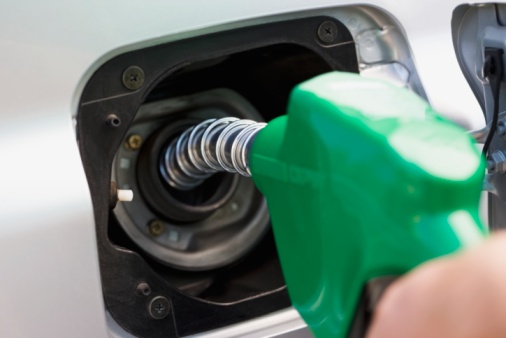Energy
Gas Prices Continue to Surge, Reach $4 in Some Cities
Published:
Last Updated:
Update: The carefully followed Lundberg Survey announced Monday that the average price of a gallon of regular gasoline reached a 13 month high of $3.5918. That number is up 8.5 cents in the last two weeks the research firm reports. According to Bloomberg:
“The most important factor right now in this rise is crude oil, which rose by a very similar amount to the street-price move,” Trilby Lundberg, president of Lundberg Survey, said Sunday. “From here, we will probably see very little increase, if any, with the big caveat of course being crude. If crude prices climb even higher, then this may not be the peak.”
Gas prices continue to move sharply higher as the Memorial Day driving seasons approaches. Nationwide, the average price of a gallon of regular unleaded gas has reached $3.667. A month ago, the price was $3.538 according to AAA’s Daily Fuel Gauge Report. The average price of a gallon of premium has crossed $4 nationwide to $4.010. The prices increases are geographically uneven. In some large cities, regular has already risen well above $4. As higher prices spread, so do questions about the damage gas prices could do to the economy.
California is the largest state in the U.S. with about 12% of the population. The price for an average gallon of regular there has topped $4.199. In some California cities, the situation is worse. The price of an average gallon of regular is $4.288 in Los Angeles, and $4.274 in San Francisco.
Many of the other states which have extremely high gas prices are also among the largest by population. The average price is $3.949 in Illinois, $3.829 in New York, and $3.747 in Michigan.
Predicting gas prices is a dicey game. Oil, the primary component of gas prices can shoot up because of trouble in Ukraine, or drop down because of larger than expected supplies. Recently, the pressure has been upward. At $104.30 barrel, crude is at a one-year high. Each time unrest in Ukraine heats up, the prices inches higher. Refinery capacity can affect gas prices, too, However, for now, geopolitical considerations are by far the biggest trigger.
An analysis of the most miserable cities in America
The debate about how much gas prices hurt or help the American economy has gone on for decades. The 1970s Arab Oil Embargo battered the U.S. economy. Oil peaked at $145.29 in July 2008. Many experts believe that price shock deepened the recession.
The people most vulnerable to gas prices increases are almost certainly the lower and middle classes, particularly people who have to drive a great deal. Wages have been stagnant among these groups, a problem that plans to increase the minimum wage might solve. In the meantime, the higher gas prices go, the more likely that U.S. consumer spending will be hampered
Read about whether increases in crude inventories will push gas prices down.
In some places, gas is at an eight-month high.
The thought of burdening your family with a financial disaster is most Americans’ nightmare. However, recent studies show that over 100 million Americans still don’t have proper life insurance in the event they pass away.
Life insurance can bring peace of mind – ensuring your loved ones are safeguarded against unforeseen expenses and debts. With premiums often lower than expected and a variety of plans tailored to different life stages and health conditions, securing a policy is more accessible than ever.
A quick, no-obligation quote can provide valuable insight into what’s available and what might best suit your family’s needs. Life insurance is a simple step you can take today to help secure peace of mind for your loved ones tomorrow.
Click here to learn how to get a quote in just a few minutes.
Thank you for reading! Have some feedback for us?
Contact the 24/7 Wall St. editorial team.